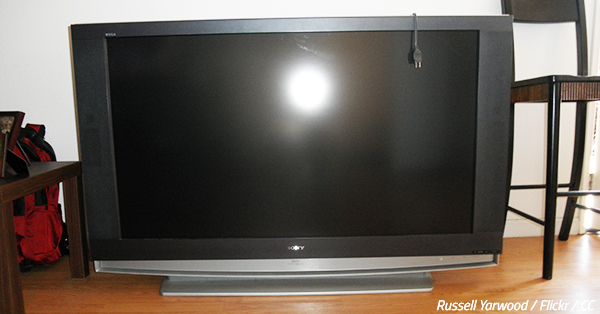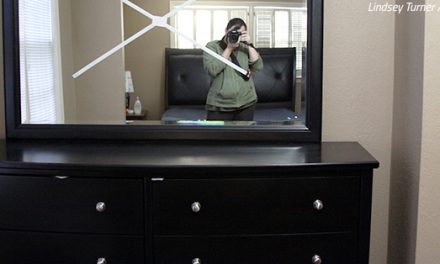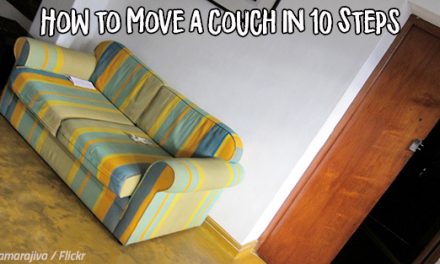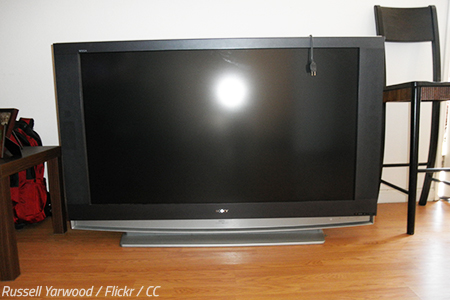 When you’re getting ready to move out, there are certain possessions that you would never even think about leaving behind regardless of how difficult or costly they may be to move all the way to a new home.
When you’re getting ready to move out, there are certain possessions that you would never even think about leaving behind regardless of how difficult or costly they may be to move all the way to a new home.
One such item in your home will be the TV set. Now, provided that your TV is in decent condition (it’s not broken and it’s not too old), then you should definitely want to take it with you. And why wouldn’t you?
Modern TVs are quite expensive, so it won’t make any sense to get rid of yours as long as it’s working just fine.
Therefore, when you transfer the packing hub into the living room, your (big) flat-screen TV will be one of the extra fragile items you will have to protect for the upcoming move. Keep in mind that all electronic devices are rather delicate and susceptible to transportation damage, and your TV set is no exception.
Read on to learn the best way to pack a TV for moving. The packing steps below will show you what you should and shouldn’t do when packing a TV for a move.
Why are flat-screen TVs difficult to pack and move?
The truth is that large flat-screen TVs are really hard to protect for a move. Why? Here are the major reasons why you shouldn’t expect the task of packing your TV set for a move to be a piece of cake.
- Dimensions. The majority of modern LED TVs are big – they have large screens for a better viewing experience. And that’s great… until those hi-tech electronic pieces have to be moved safely from one home to another. The most common TV sizes available today are 32”, 43”, 55”, and 65”.
- Weight. While new TVs are much lighter than old ones, they can still be too heavy to handle on Moving day. LED TVs can weigh up to 60 pounds for 65-70-inch models while older plasma TVs weigh anywhere between 80 pounds and 100 pounds.
- Fragility. TVs are delicate pieces of electronics and, not surprisingly, their most vulnerable parts are their flat screens. A seriously damaged TV screen often means having to buy a new TV altogether since screen repair costs are usually too expensive to be worth the trouble. So, your main focus should be on effective ways to protect the screen of your TV during the packing task.
- Cost. Latest TVs can cost up to a few thousand dollars (depending on their brand and screen size), so you definitely don’t want to see your TV damaged in any way during the relocation. Due to the inevitable moving expenses, your budget will most likely be already stretched as it is so you should do all in your power to keep your TV perfectly safe throughout the move.
What supplies do you need to pack your TV?
One thing is clear: you won’t be able to protect your TV properly if you don’t have the necessary packing materials. So, your very first step is to gather the TV packing supplies you’ll need for the job.
-
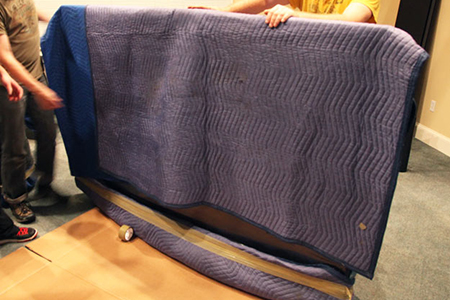
Furniture blankets and sheets of cardboard are the two most critical supplies when packing a TV for a move.
A TV box. The best way to protect your fragile TV set is to transport it in its original box. TV boxes are specially designed to offer the best possible protection for TVs – not only are they made of thick cardboard, but they also match perfectly the size of the TV and have specialized Styrofoam inserts that keep the device both padded and immobilized inside the carton.
- Cardboard sheets. You will need several large sheets of clean, strong cardboard. The good news is that it’s easy to find – just break down a couple of big cardboard boxes and you’re good to go.
- Foam sheets. If possible, get a couple of foam sheets for the TV screen – they are soft and will serve as the first layer of protection for the fragile element.
- Bubble wrap. It’s always a good idea to have sheets of bubble wrap close by during the packing process. In this case, the bubble wrap will add extra protection for your prized possession.
- Packing paper. You’ll need the packing paper to wrap the TV remote, the cables, and any other TV accessory you’re taking with you.
- Furniture blankets. Secure several thick moving blankets that will help you create a soft padding layer around your big electronic device.
- Masking tape. Have a roll of painter’s tape – it’ll be very useful when you fix padding directly onto the TV case because, unlike regular packing tape, masking tape does not leave any marks when it’s removed.
- Packing tape. One roll of high-quality packing tape should be enough for the job.
How Many Boxes Do You Need When Moving?
How to prepare your TV for packing and moving
When you’ve gathered the required packing supplies, it’s time to prepare your TV set for packing. Follow these steps to do so.
- TAKE a few photos of the way your TV is wired up with other electronic devices – peripherals such as a sound system, a game console, or a video player. A few quick shots can save plenty of time after the move while you’re trying to hook up the TV correctly.
- SECURE the power cord. If the TV power cable is detachable, remove it, fold it gently, secure it with a cable tie, and pack it with packing paper. If the power cord cannot be removed from the unit, fold it, secure it with a rubber band, and tape it to the back of the TV using painter’s tape.
- UNPLUG and LABEL all cables. There’s nothing complicated here – simply unhook all cables from the TV set and label them correctly with the help of pieces of masking tape. Then, fold those cables carefully, secure them with a cable tie or a rubber band, and wrap them up in soft packing paper.
- DISMOUNT the TV from the wall mount. If the electronic unit is mounted on the wall on a wall mount, then detach it carefully from the bracket and place it gently onto the floor to be padded and packed safely. Make sure you have a helper to complete this step. Also, remove the wall mount and pack it into a furniture blanket.
- REMOVE the TV stand and pack it up. If your TV is resting on a piece of furniture with its stand, then all you need to do is detach the TV stand safely. Again, have a person help you during this step to prevent any type of damage. Wrap the stand in wrapping paper.
- CLEAN your TV set. Your TV may be somewhat dusty and you wouldn’t want to take that dust into the new home. Use a soft damp cloth to remove the accumulated dust from the case of the unit. Also, use a high-quality screen cleaner and a soft microfiber cloth to clean the large flat screen of the device.
How to Pack Electronics for Moving
How to protect the TV screen
As explained above, the screen of your TV will be its most delicate part so you must make sure you protect it in the best possible way. A scratched TV screen can definitely ruin your viewing pleasure, let alone a more serious type of damage such as a crack along its surface.
Also, insufficient or improper protection of your TV set can lead to various sorts of distortion on the screen (discolored, lightened, or darker areas), often the result of external substances such as moisture, dust, or smoke entering the display panel.
Here’s the best way to protect your TV screen prior to packing the unit:
- Position the large piece of foam sheet over the TV screen to form the first layer of protection. The soft padding will be gentle on the screen surface and won’t damage it in any way. Secure the foam using pieces of masking tape.
- Place a big sheet of thick cardboard over the entire screen so that the cardboard piece matches exactly the dimension of the TV display. If the cardboard sheets you have are not big enough, then you should attach two or more pieces together to make them the right size. Then, secure the hard cardboard on-screen protector with the help of some masking tape.
Always use masking tape (aka painter’s tape) for the purpose and never regular packing tape. Painter’s tape is gentle on delicate surfaces and won’t leave any hard-to-remove marks after it’s peeled off.
How to pack a flat-screen TV inside a box
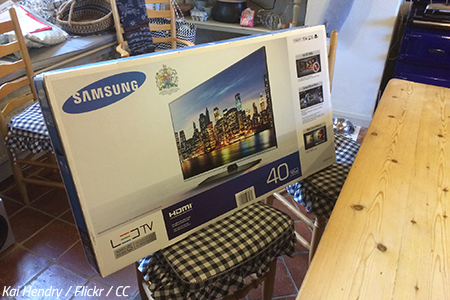
Original TV boxes offer the best level of protection for your flat-screen TV.
We’ll take a look at two separate cases when packing a TV for a move: 1) when you do keep the original TV box the electronic unit came in when you first bought it from the store, and 2) when you have no idea where that TV box is and therefore will pack the device without a box.
There’s also an in-between scenario when you don’t have the original TV box but you’re willing to find another box that will fit the size and shape of your TV set.
Now that you’ve protected the TV display adequately, here are the steps you need to follow to pack a TV inside a box:
- Prepare the TV box to accommodate the large electronic unit. Inspect the box closely for any type of damage. If the cardboard container has been in storage for years, then it’s a good idea to strengthen its bottom and side edges using strong packing tape. Place a few sheets of bubble wrap along the bottom on the inside to form a soft insulation layer.
- Contact the largest electronics store in your city or town and ask them if they happen to have a suitable box for your TV model. Do this in case you don’t keep the original TV box but still want to transport your TV inside a cardboard container. It’s worth the effort – a single phone call can make your work much easier and you’ll be glad to know that your TV will be transported in the safest way possible.
- Transfer the flat-screen TV into the cardboard box really carefully. Don’t let the unit just drop into the box – instead, slide it downwards slowly until it lands softly onto the bottom.
- Place the original Styrofoam inserts properly to immobilize the TV inside the box. Sometimes you will have to fix those inserts onto the TV before you slide it into the carton.
- Fill in any sizeable gaps inside the TV box with pieces of crumpled paper, discarded sheets of bubble wrap, or even pieces of old clothing. This is especially important in case you haven’t used any Styrofoam inserts.
- Remove the batteries from the remote control and wrap the TV accessory in soft packing paper. Then, place it on the top of the TV inside the box.
- Add the paper-wrapped power cord to the box, if applicable.
- Do the shaking test together with your helper. You should both lift the box off the ground and shake it gently. If you feel the TV shifting inside, be it even slightly, add more padding materials inside the carton to fix it.
- Close the box and seal it shut using packing tape.
How to pack a flat-screen TV without a box
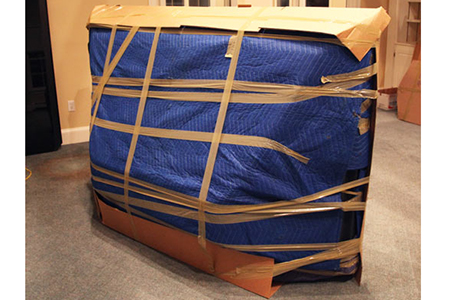
Packing a TV for moving without a box is still possible but it requires a special two-layer packing technique.
You shouldn’t worry too much if you don’t have a suitable box to pack your TV set into. The thing is that you can pack your TV without a box using a special packing technique explained in detail below.
The major concept of packing a TV for moving without a box is to create two protective layers: 1) a soft layer (furniture blankets + bubble wrap) that will be the first line of defense for the electronic device, and 2) a hard layer (cardboard) over the initial soft one that will keep the TV set from any damaging external forces.
The method of packing a TV without a box relies on the fact that you have already protected the fragile display as described above (foam + cardboard).
- Wrap the whole TV in several thick furniture blankets. Use packing tape to secure those padding blankets but be careful not to use tape on the TV surface itself.
- Wrap the TV set in anti-static bubble wrap – the plastic air-bubbled sheets should be placed over the moving blankets. Secure the bubble wrap with packing tape.
- Use cardboard sheets to form a final hard-shell protective layer around your TV. Make sure the front, the back, and the sides of the units are all covered in pieces of thick cardboard. Use plenty of packing tape to fix the sheets in place.
Packing a TV for a move without professional assistance can be somewhat risky, especially if you’ve never had to pack a TV for moving before. If you feel nervous about packing your TV all by yourself (remember that professional moving companies won’t take responsibility for any damage during transport if packing was done by their customers), then you’d better get in touch with the best movers in your area and get free moving quotes to see how much they will charge you for the job.

